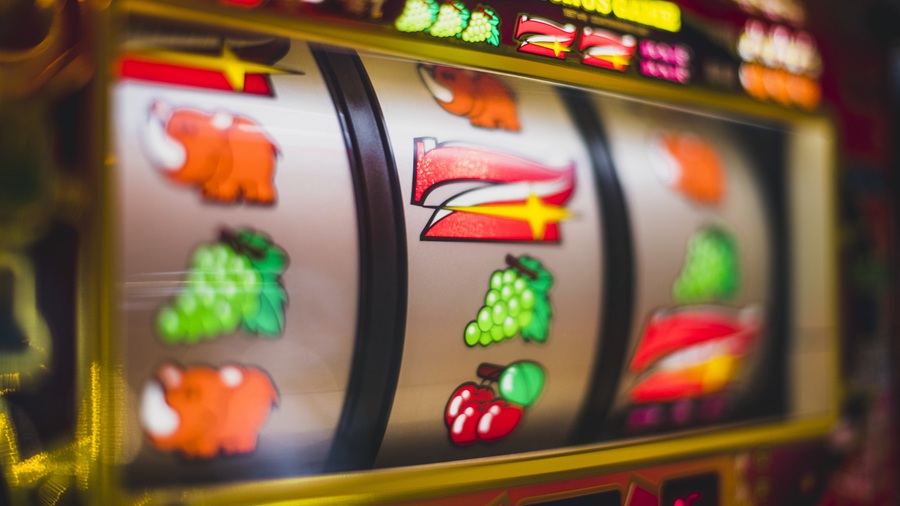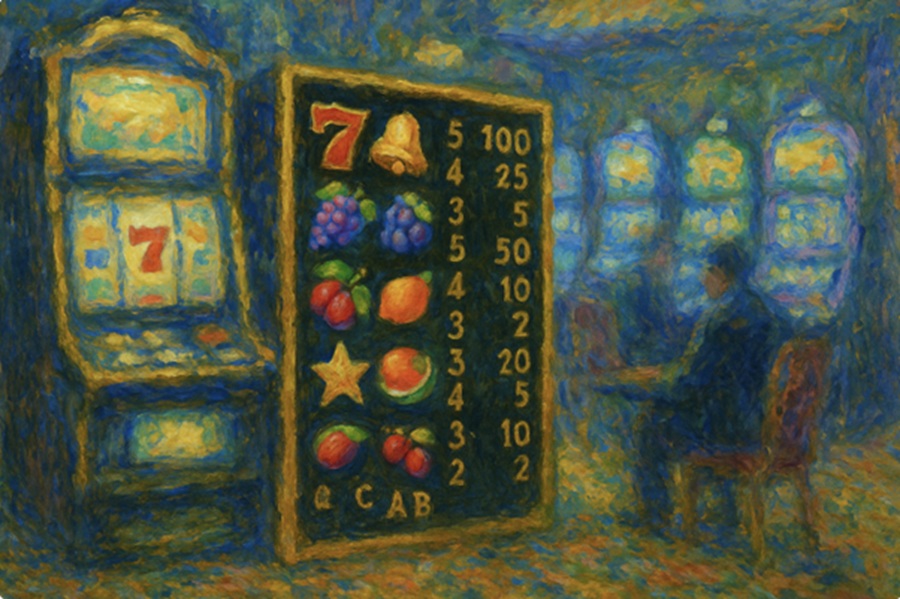How to read a paytable in two minutes
A paytable isn’t just a list of what symbols are worth — it’s the machine’s way of showing how it thinks
POKIES GUIDE BY LuckyGreen starts with one simple truth: the paytable is the clearest window into how a pokie actually plays. It shows the rhythm of wins, the symbols that matter, and the little quirks that give each machine its character. Think of it as the scoreboard before the first pitch or the playbook before the kickoff—just laid out in numbers and symbols instead of chalk lines. In two minutes, you’ve got the game explained, and the reels start making a lot more sense.
Why Paytables Matter
A paytable isn’t just a list of what symbols are worth. It’s the machine’s way of showing how it thinks. Does it want you to chase free spins? Does it pay out little wins all the time, or save the action for rare symbols? You can see all of that in two minutes flat if you know where to look. The goal isn’t to become a mathematician. The goal is to spot what the machine expects from you and decide if you’re in the mood for it.
Some players like constant small nudges—little wins that keep the balance ticking over. Others want the slow burn that explodes when the scatter lands just right. Different styles, different moods, but the paytable gives you the map.
Symbols: The Building Blocks
Start at the top. Most paytables show the premium symbols first—the themed ones that fit the pokie’s title. If you’re on a pirate machine, it’ll be treasure chests, parrots, captains. On an Egyptian machine, it’s scarabs, ankhs, pyramids. These usually pay the best, but also land the least.
Then come the low-paying fillers: A, K, Q, J, 10, 9. They don’t pay much individually, but they fill the reels and keep the game moving. Seeing a line of queens is rarely thrilling, but it keeps you from staring at empty reels. The paytable tells you exactly how much difference there is between a line of five queens and five golden masks. Sometimes it’s 10x. Sometimes it’s 200x.
Wilds and scatters get their own section. The wild substitutes, simple enough. But read carefully: does it double wins when it substitutes? Does it only appear on certain reels? Those tiny notes can change the whole flavor of the game.

Lines and Ways
This is where many players zone out. The machine says “243 ways” or “10 paylines” and most people nod without really clocking it. The paytable explains it, and it’s worth that 10-second glance. “Ways” systems mean left-to-right matches, anywhere on consecutive reels. Lines mean exact patterns. The fewer the lines, the more focused the wins feel—big when they hit, empty when they don’t. More ways mean more frequent hits, often smaller.
You don’t need to memorize the line diagrams, but look at how many are there. Ten lines plays very differently from 50. It changes the rhythm of the spins. Knowing that rhythm before you start saves you the “why does this feel dead?” moment later.
Bonus Features
Every modern pokie has its hook. Free spins. Expanding wilds. A pick-me bonus where you click on treasure chests until a “collect” pops up. The paytable shows how often those might appear—or at least hints at it. If the scatter only appears on reels 1, 3, and 5, then the free spins won’t be a frequent guest. If wilds expand on every reel, expect more action.
Some paytables even show the odds, though in tiny print. “Bonus triggers on average once every 150 spins” isn’t common, but when you see it, you know what you’re signing up for. Most just show examples, but examples still tell a story.
RTP and Volatility
Some paytables list the Return to Player (RTP). Others don’t, and you need the info page. Either way, it’s worth checking. An RTP of 96% is standard. Anything higher is generous. Lower? You’ll feel it over time.
Volatility is sometimes shown as stars, sometimes described in words. High volatility means long dry spells and big bursts. Low volatility means steady drips of small wins. The paytable is where the machine admits what kind of personality it has. If you’re playing late at night with one eye half-closed, maybe don’t pick the one that brags about “high volatility.”

Reading It Fast
Here’s the two-minute version:
- Check the top symbols. What’s the max win for five of a kind? Does it excite you or barely move the needle?
- Glance at the low symbols. Are they worth anything, or just filler?
- Look at wilds and scatters. Do they carry multipliers? Do they appear everywhere or only on certain reels?
- Count the lines/ways. Ten lines? 243 ways? That number changes the mood of the whole pokie.
- Scan the bonus section. Free spins, multipliers, features—how do they work?
- Note the RTP/volatility. Standard, high, low? What’s the vibe?
That’s it. Two minutes, tops.
Why Players Skip It
Because it looks like homework. The fonts are small. The rules are dry. And the casino doesn’t exactly wave it in your face. They’d rather you just spin. But skipping the paytable is like ordering a cocktail without knowing if it’s a shot of whiskey or a tiki jug for two. You’ll still drink it, but the surprise might not be pleasant.
Tricks Hidden in Plain Sight
Paytables sometimes hide little quirks. For example: a wild that only appears on the middle reel but expands every time—that’s stronger than a wild on every reel that doesn’t expand. Or a scatter that pays anywhere, but only at low multipliers—it teases a lot, but doesn’t change the balance much.
Machines also slip in maximum win caps. “Maximum payout: 5,000x bet.” You’ll find that buried in the paytable. If you’re the kind of player who dreams of life-changing jackpots, that’s information you want before spinning.
Don’t Overthink It
Paytables aren’t meant to scare you off. They’re just the rules. Some players obsess, writing down numbers, calculating odds. Most don’t. The sweet spot is to give it two minutes, get the gist, and move on. Otherwise, you’re sitting there with a calculator while everyone else is already on their second bonus round.

A Few Examples
Take a pokie where the top symbol pays 500x for five of a kind. Pretty generous. If the wild substitutes and doubles wins, that’s suddenly 1,000x. Now compare it to another pokie where the top symbol pays 200x and there’s no multiplier. The difference in mood is massive. One machine is about chasing big hits. The other is about steady drips.
Or imagine a scatter that triggers free spins but only shows up on reels 1, 3, and 5. That means you’ll be waiting. Compare that to a scatter that appears anywhere on all reels. Suddenly, bonuses feel within reach every few minutes. The paytable told you that—if you read it.
The Real Reason Casinos Hide Them
They don’t hide them, not really. But they don’t advertise them either. Paytables aren’t sexy. They don’t sparkle. They’re basically the instruction manual in a box of fireworks. Necessary, but not exactly the thing you want to show off at the party. Yet for anyone who cares about not burning their fingers, the manual matters.
Final Thoughts (Or Lack Thereof)
The funny part is that once you’ve read enough paytables, you start spotting the patterns without even opening them. You see a machine with 243 ways, and you already know the feel. You see a wild that only appears on the middle reel, and you can guess the hit rate. The paytable just confirms it.
But for new machines, for something you haven’t spun before, give it two minutes. That’s all it takes. Then spin away, knowing you’re at least in on the machine’s little secrets. Or not-so-secrets, if you’ve been paying attention.

